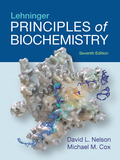
Concept explainers
(a)
To determine: The size of a typical eukaryotic cell with cellular diameter of
Introduction:
The eukaryotic cells are more complex than the prokaryotic cells and they vary based on the structure and functions. The eukaryotes have been evolved from the unicellular organisms in the timeline of evolution.
(a)
Explanation of Solution
The diameter (
The size of a typical eukaryotic cell with cellular diameter of
(b)
To determine: The number of molecules of actin in a myocyte of diameter
Introduction:
The eukaryotes have been evolved from the unicellular organisms in the timeline of evolution. The second phase of evolution has been started when the levels of multicellularity diversify the organisms into algal species,
(b)
Explanation of Solution
The diameter (
The diameter (
The volume of the given myocyte is as follows:
The volume of the given actin is as follows:
The number of actin molecules in the given myocyte is as follows:
The number of molecules of actin in a myocyte (if the diameter of actin molecules is
(c)
To determine: The number of molecules of mitochondria in a liver cell of diameter
Introduction:
The eukaryotic cells are more complex than the prokaryotic cells and they vary based on structure and functions. The eukaryotes have been evolved from the unicellular organisms in the timeline of evolution. Mitochondrion is part of a eukaryotic cells and the energy storage of any cell.
(c)
Explanation of Solution
The diameter (
The diameter (
The volume of the given liver is as follows:
The volume of the given mitochondria is as follows:
The number of mitochondria molecules in the given myocyte is as follows:
The number of mitochondria in a liver cell (if the diameter of action molecules is
(d)
To determine: The number of molecules of glucose be present in spherical eukaryotic cell if the cellular concentration is
Introduction:
Glucose is known as a simple sugar molecule which possess a molecular formula
(d)
Explanation of Solution
The volume of the given eukaryotic cell is
One cubic centimeter is equal to one millimeter. Therefore, the volume is
The number of molecules in one liter of
The total number of glucose in given cell is as follows:
The number of molecules of glucose be present in spherical eukaryotic cell if the cellular concentration is
(e)
To determine: The number of glucose molecules in hexokinase molecule if the hexokinase concentration is
Introduction:
Glucose is known as a simple sugar molecule which possess a molecular formula
(e)
Explanation of Solution
The concentration of hexokinase molecule is
One molecule of hexokinase will have
The number of glucose molecules in hexokinase molecule (if the hexokinase concentration is
Want to see more full solutions like this?
Chapter 1 Solutions
EBK LEHNINGER PRINCIPLES OF BIOCHEMISTR
- Which type of enzyme catalyses the following reaction? oxidoreductase, transferase, hydrolase, lyase, isomerase, or ligase.arrow_forward+NH+ CO₂ +P H₂N + ATP H₂N NH₂ +ADParrow_forwardWhich type of enzyme catalyses the following reaction? oxidoreductase, transferase, hydrolase, lyase, isomerase, or ligase.arrow_forward
- Which features of the curves in Figure 30-2 indicates that the enzyme is not consumed in the overall reaction? ES is lower in energy that E + S and EP is lower in energy than E + P. What does this tell you about the stability of ES versus E + S and EP versus E + P.arrow_forwardLooking at the figure 30-5 what intermolecular forces are present between the substrate and the enzyme and the substrate and cofactors.arrow_forwardprovide short answers to the followings Urgent!arrow_forward
- Pyruvate is accepted into the TCA cycle by a “feeder” reaction using the pyruvatedehydrogenase complex, resulting in acetyl-CoA and CO2. Provide a full mechanismfor this reaction utilizing the TPP cofactor. Include the roles of all cofactors.arrow_forwardB- Vitamins are converted readily into important metabolic cofactors. Deficiency inany one of them has serious side effects. a. The disease beriberi results from a vitamin B 1 (Thiamine) deficiency and ischaracterized by cardiac and neurological symptoms. One key diagnostic forthis disease is an increased level of pyruvate and α-ketoglutarate in thebloodstream. How does this vitamin deficiency lead to increased serumlevels of these factors? b. What would you expect the effect on the TCA intermediates for a patientsuffering from vitamin B 5 deficiency? c. What would you expect the effect on the TCA intermediates for a patientsuffering from vitamin B 2 /B 3 deficiency?arrow_forwardDraw the Krebs Cycle and show the entry points for the amino acids Alanine,Glutamic Acid, Asparagine, and Valine into the Krebs Cycle - (Draw the Mechanism). How many rounds of Krebs will be required to waste all Carbons of Glutamic Acidas CO2?arrow_forward
 BiochemistryBiochemistryISBN:9781319114671Author:Lubert Stryer, Jeremy M. Berg, John L. Tymoczko, Gregory J. Gatto Jr.Publisher:W. H. Freeman
BiochemistryBiochemistryISBN:9781319114671Author:Lubert Stryer, Jeremy M. Berg, John L. Tymoczko, Gregory J. Gatto Jr.Publisher:W. H. Freeman Lehninger Principles of BiochemistryBiochemistryISBN:9781464126116Author:David L. Nelson, Michael M. CoxPublisher:W. H. Freeman
Lehninger Principles of BiochemistryBiochemistryISBN:9781464126116Author:David L. Nelson, Michael M. CoxPublisher:W. H. Freeman Fundamentals of Biochemistry: Life at the Molecul...BiochemistryISBN:9781118918401Author:Donald Voet, Judith G. Voet, Charlotte W. PrattPublisher:WILEY
Fundamentals of Biochemistry: Life at the Molecul...BiochemistryISBN:9781118918401Author:Donald Voet, Judith G. Voet, Charlotte W. PrattPublisher:WILEY BiochemistryBiochemistryISBN:9781305961135Author:Mary K. Campbell, Shawn O. Farrell, Owen M. McDougalPublisher:Cengage Learning
BiochemistryBiochemistryISBN:9781305961135Author:Mary K. Campbell, Shawn O. Farrell, Owen M. McDougalPublisher:Cengage Learning BiochemistryBiochemistryISBN:9781305577206Author:Reginald H. Garrett, Charles M. GrishamPublisher:Cengage Learning
BiochemistryBiochemistryISBN:9781305577206Author:Reginald H. Garrett, Charles M. GrishamPublisher:Cengage Learning Fundamentals of General, Organic, and Biological ...BiochemistryISBN:9780134015187Author:John E. McMurry, David S. Ballantine, Carl A. Hoeger, Virginia E. PetersonPublisher:PEARSON
Fundamentals of General, Organic, and Biological ...BiochemistryISBN:9780134015187Author:John E. McMurry, David S. Ballantine, Carl A. Hoeger, Virginia E. PetersonPublisher:PEARSON





